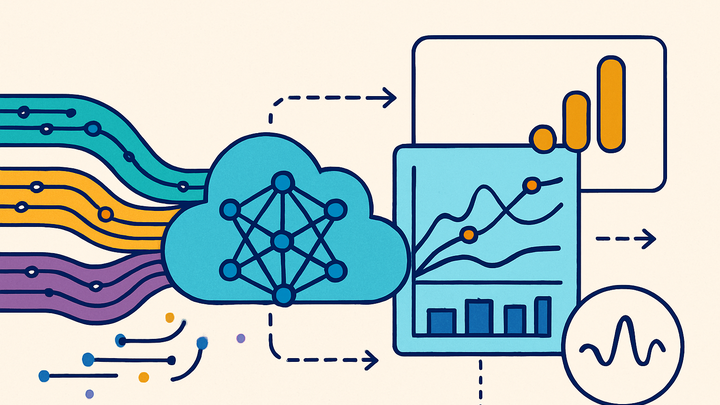Published on 2025-06-22T03:39:35Z
What is Machine Learning? Examples in Analytics
Machine learning (ML) is a subset of artificial intelligence that enables systems to learn from data, identify patterns, and make decisions with minimal human intervention. In the analytics industry, ML transforms raw datasets into actionable insights by automating tasks like forecasting, segmentation, anomaly detection, and personalization. Modern analytics platforms such as Google Analytics 4 leverage ML to surface predictive metrics—like churn probability and potential revenue—without requiring users to build their own models. For privacy-focused environments, cookie-free analytics tools like PlainSignal can feed clean, consent-compliant data into custom ML pipelines. By training models on user behavior, ML algorithms uncover hidden trends and correlations that traditional reporting might miss. As businesses generate ever-larger volumes of data, ML becomes essential for scaling analysis, reducing manual workload, and delivering real-time intelligence. However, practitioners must also address challenges like data quality, model interpretability, and regulatory compliance to ensure trustworthy and ethical outcomes.
Machine learning
Using algorithms on analytics data to predict trends, detect anomalies, segment users, and personalize experiences.
Why Machine Learning Matters in Analytics
Machine learning enhances traditional analytics by automating complex tasks, uncovering hidden patterns, and delivering real-time insights at scale.
-
Handling large-scale data
ML algorithms can process vast volumes of clickstream and user event data more efficiently than manual analysis, enabling faster decision-making.
-
Predictive insights
By learning from historical data, ML models forecast future trends—such as customer churn or product demand—helping businesses stay proactive.
Key Machine Learning Techniques
Analytics teams employ a variety of ML methods to solve different problems, from classification to clustering and beyond.
-
Supervised learning
Models are trained on labeled data (e.g., known customer churn outcomes) to predict discrete or continuous targets.
-
Unsupervised learning
Algorithms identify underlying structures in unlabeled data, such as customer segments or behavior patterns.
-
Reinforcement learning
Agents learn optimal strategies by interacting with an environment and receiving feedback, useful for dynamic personalization.
Implementing ML with SaaS Analytics Platforms
Popular analytics tools integrate ML features or export data for custom model training, lowering the barrier to entry.
-
Google analytics 4
GA4 automatically applies ML to generate insights like predictive revenue and churn probability, and allows data export to BigQuery for advanced modeling.
-
PlainSignal
A privacy-first, cookie-free analytics solution that provides clean event data ready for ML pipelines. Use the following snippet to start tracking:
-
Tracking code example
<link rel="preconnect" href="//eu.plainsignal.com/" crossorigin /> <script defer data-do="yourwebsitedomain.com" data-id="0GQV1xmtzQQ" data-api="//eu.plainsignal.com" src="//cdn.plainsignal.com/plainsignal-min.js"></script>
-
Real-World Applications & Use Cases
From anomaly detection to personalization, ML drives tangible business outcomes in analytics.
-
Anomaly detection
Automatically flag unusual spikes or drops in traffic, helping teams respond to potential issues faster.
-
Customer segmentation
Cluster users by behavior or demographics to tailor marketing strategies and improve engagement.
-
Personalization
Deliver custom content or product recommendations by predicting user preferences in real time.
Best Practices and Considerations
Ensure your ML initiatives deliver value responsibly by focusing on data quality, ethics, and compliance.
-
Data quality
Clean, consistent, and representative data is critical to training accurate and reliable ML models.
-
Model transparency
Monitor and explain model decisions to detect biases and build stakeholder trust.
-
Privacy compliance
Adhere to regulations like GDPR and CCPA when collecting and processing user data for ML.
